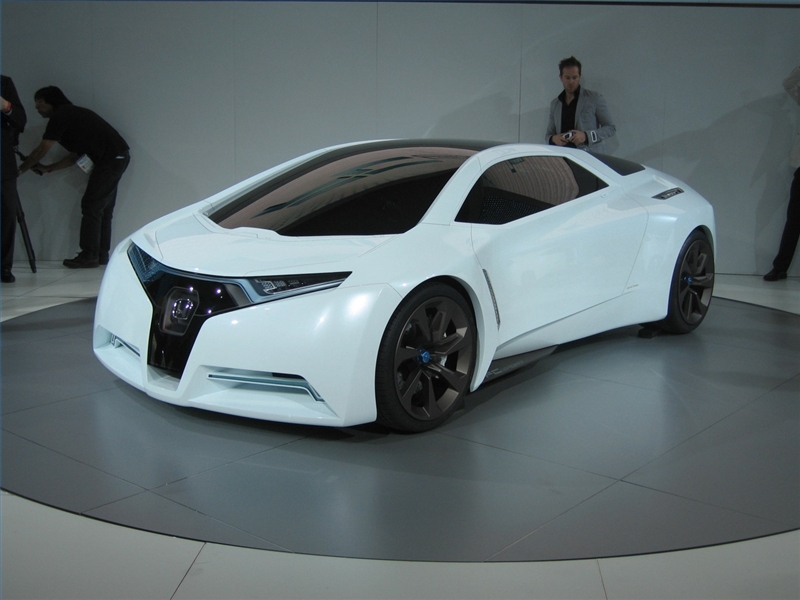
Hydrogen-powered cars are a relatively new technology, although hydrogen-powered engines date as early as 1807. These automobiles are powered by two types of engines: the internal combustion engine similar to the gasoline-powered version, and the fuel-cell conversion that allows hydrogen to react with oxygen to produce electricity and water to power an electric motor.
The hydrogen internal combustion engine was invented in 1807 by Francois Isaac de Rivaz, although a United States patent wasn't issued until 1970, when engineer Paul Dieges applied for one.

German engineer Felix Wankel designed the Wankel rotary engine in the 1950s and conceived a version to burn hydrogen. But the four-stroke reciprocating engine proved unsuitable because the hydrogen was prone to misfiring on the spark plugs and hot exhaust valve. The problem can be solved by using ceramic surfaces, but the ceramic piston rings have not been perfected.

The Wankel experiment pointed to the difficulty of adapting the internal combustion engine to hydrogen power. More effective are fuel-cell versions. Francis T. Bacon developed a fuel-cell prototype hydrogen engine in 1959, followed in the early 1960s by inventor Roger Billings. Although hydrogen fuel cells are susceptible to freezing temperatures and are very fragile and expensive, the lion's share of private and government funding is focused on hydrogen fuel cell power.

Most major automakers have attempted to develop hydrogen-powered cars. However, the Ford Motor Company abandoned its plans in favor of focusing on electric cars, while Renault-Nissan canceled all hydrogen research and development projects. A major obstacle is developing fuel cells that can work effectively despite the vibrations and bumps experienced in cars.

These major obstacles are not the end of hydrogen engines. Honda has developed a concept car, the fuel-cell FC Sport. Daimler AG plans to manufacture 100,000 FC cars in 2012-13, and Hyundai is on schedule to build 500 FC cars by 2010. The Buckeye Bullet 2, built by students at Ohio State University, set a land speed record of 286 mph for a hydrogen-powered car in 2008. A prototype Ford Fusion hit 207 mph.

As of 2009, there are perhaps only 200 hydrogen-powered cars in the United States that are used primarily as demonstration models or for commercial lease. There are, however, motorcycles, buses, aircraft, ships and even wheelchairs that are hydrogen-powered.

Widespread use of hydrogen-powered automobiles is not expected until at least 2050. In addition, the U.S. government announced plans in mid-2009 to stop funding fuel cell development, as electric and hybrids using a electric/gasoline combination have taken priority. Private fuel cell design projects continue with an eye towards platinum and nickel-tin to lower fuel cell costs and to function despite the impurities inherent in the hydrogen supply.
